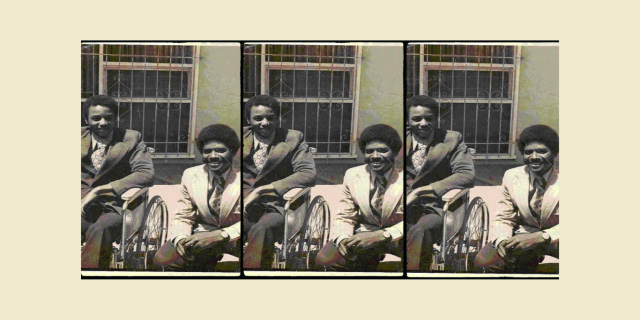The Intersection of Black History and Disability Movement - Black American Trailblazers

By Jason Snead, Research and Communication Specialist
February is a time to celebrate Black Americans who made incredible contributions to move our nation forward. This year, during Black History Month, the Council features the stories of some Black disability advocates who contributed to the disability movement.
First, Brad Lomax:
Brad Lomax joined the Black Panther Party (BPP) in the late 1960s, hoping to be part of a revolution that would provide a better life for Black Americans, free of inequality, poverty, and police brutality. However, it was in an entirely different civil rights movement — one for people with disabilities — that he would make his most indelible mark.
Diagnosed with multiple sclerosis in his teens, Lomax founded the Washington, D.C., chapter of the BPP and organized the first African Liberation Day demonstration in 1972. In 1975, Lomax worked with Ed Roberts, the founder of the Center for Independent Living (CIL) in Berkeley, California, to open another CIL site in East Oakland with support from the BPP. In 1977, disability rights activists staged a sit-in in San Francisco’s federal office building to urge the government to implement Section 504 of the Rehabilitation Act; Lomax was there. Alongside his fellow activists, he camped out in the building for three weeks despite the government’s decision to shut off the building’s water supply and phone lines.
Brad Lomax, sadly, died at the age of 33, yet his legacy has lived on, paving the way for decades of activism that have radically improved disabled people’s opportunities and access.
Next, Lois Curtis:
Lois Curtis was involuntarily moved from one mental institution to another, starting at a very early age. She had grown up with a cognitive and developmental disability and ultimately became the lead plaintiff in Olmstead v. L.C., the case in which the United States Supreme Court ruled in 1999 that warehousing people with developmental disabilities in deficient mental institutions, when they are capable of being integrated into the community, was constitutionally unacceptable. Since the time of Olmstead, hundreds of thousands of individuals with I/DD have been transitioned from institutions into community-based residential settings.
In 2014, Lois was asked what she would say to people who were still institutionalized and she said:
“I hope they live long lives and have their own place. I hope they make money. I hope they learn every day. I hope they meet new people, celebrate their birthdays, write letters, clean up, go to friends' houses, and drink coffee.”
Lois eventually moved into her own apartment, worked as an artist, and exhibited her work - boldly colorful pastel, and acrylic portraits - in Georgia galleries. Her artistic talent and passion for creativity motivated her to make art and advocacy her top goals. Her artwork is a heartfelt, bold expression of how deeply she values personal relationships.
Lois was 55 when she died on November 3, 2022, at her home in Clarkston, Georgia.
Finally, Haben Girma:
Haben Girma was born with a progressive condition that caused her to lose her hearing and retain only 1% of her eyesight. Haben is a first-generation immigrant, and the first deaf and blind student to graduate from Harvard Law School.
Haben was born and raised in the San Francisco Bay Area, where she currently lives. Her memoir takes readers on adventures around the world, including her parents’ homes in Eritrea and Ethiopia, building a school under the scorching Saharan sun, training with a guide dog in New Jersey, climbing an iceberg in Alaska, fighting for blind readers at a courthouse in Vermont, and talking with President Obama at the White House.
“Choosing accessibility is not just about legal requirements,” Haben explains, “it’s also good business. Disabled people are the largest historically underrepresented group, numbering over one billion worldwide. Reaching a group of this scale creates value for everyone. Organizations that prioritize accessibility benefit by gaining access to a much larger audience, improving the experience for both disabled and non-disabled people, and facilitating further innovation.”
Black Americans with disabilities are still fighting for equal access and support today. Nevertheless, the Council honors all Black Americans past and present, and their continued fight for the disability community. Our sincere hope is that the individuals in this article inspire you to keep on fighting.






